Surrey buildings lose letters, gain tree names
December 1, 2009 by Kirk Darbyshire · 1 Comment
This week on the Surrey campus, room numbers won’t change but the names on the buildings they’re in will.
In May, Kwantlen announced planned name changes for all of the buildings on the schools Surrey campus. Over the next week signage will be updated to reflect the changes.
Building C has already been dedicated as Surrey Main, and this week the remainder of the buildings will lose their letters in favour of the names of trees indigenous to British Columbia.
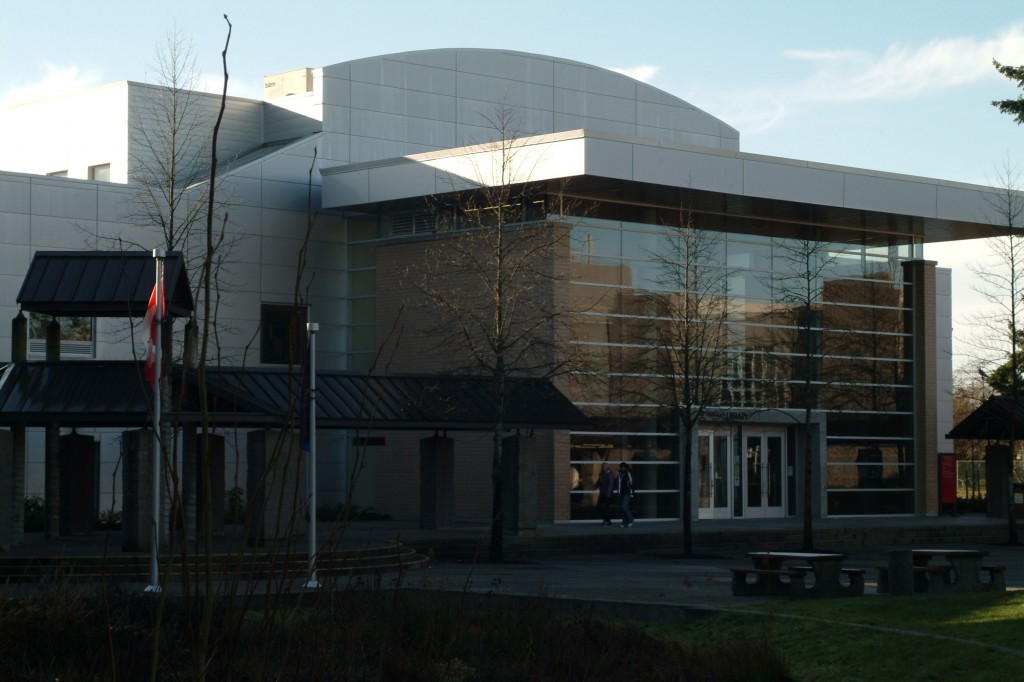
Building A is now Arbutus. Arbutus building is where the Coast Capital Savings Library is located. The name Arbutus was chosen because the tree is Canada’s only broad-leafed evergreen tree. It also has historically meaning for the coastal Salish peoples in regards to medicine and mythology. (Kirk Darbyshire photo)
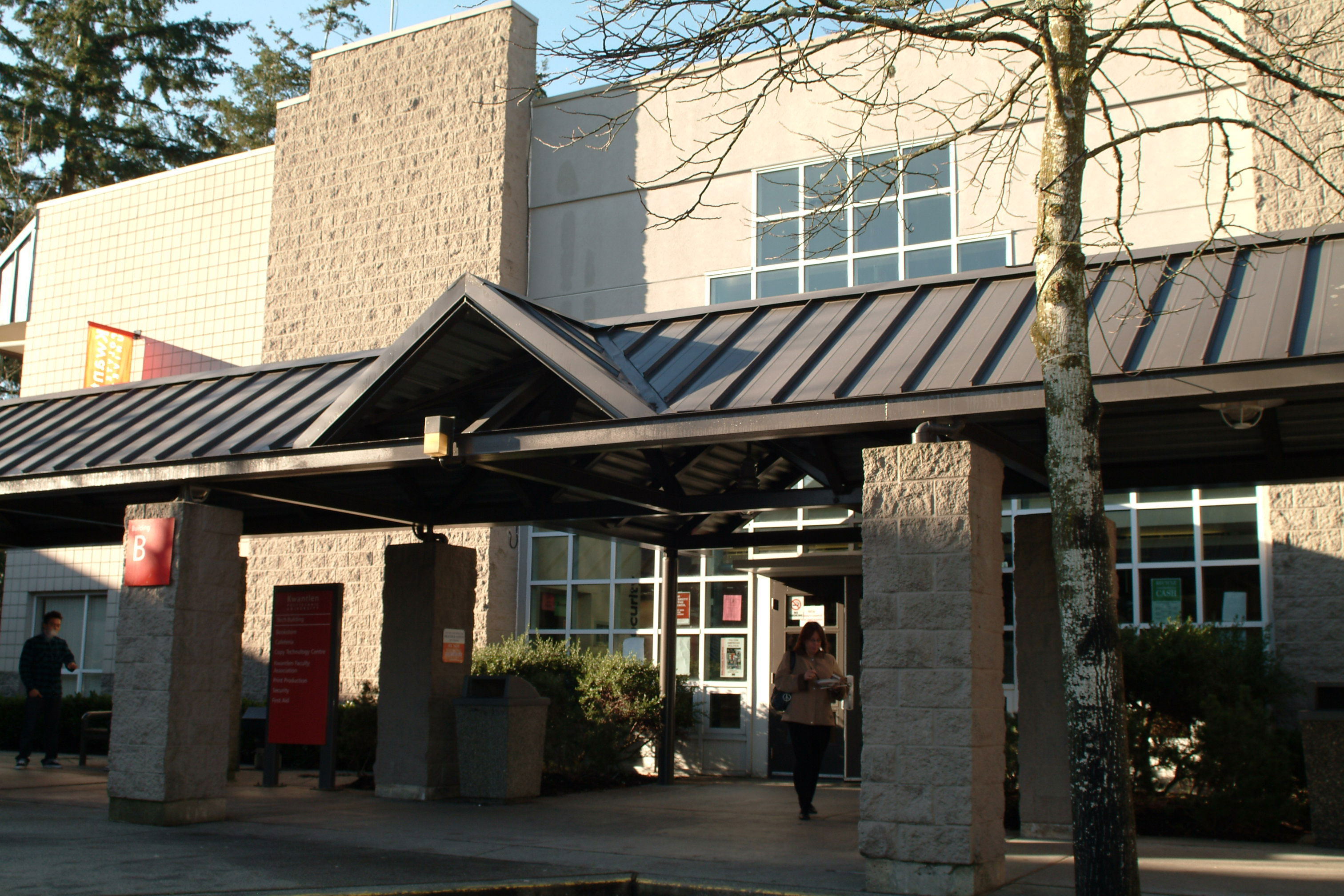
Building B is now Birch. Birch building is where the Kwantlen bookstore and Chartwells Café can be found. “Bright white and shining†is the ancient European meaning for the word birch. Birch was chosen as a name due to the nearly imperishable nature of the tree's bark. It also has historical roots in many cultures including being used to make canoes, tools and musical instruments. (Kirk Darbyshire photo)

Building D is now Fir. Fir makes up half of the academic learning building and is located in the courtyard close to the school's pond. Fir was chosen as a name because the tree is the most commercially important in western North America. Historically, Douglas Firs have the reputation of being the largest of all trees. Even though giant firs are a thing of the past due to over-foresting, stories of the towering trees climbing over 400 feet into the air are still told. (Kirk Darbyshire photo)
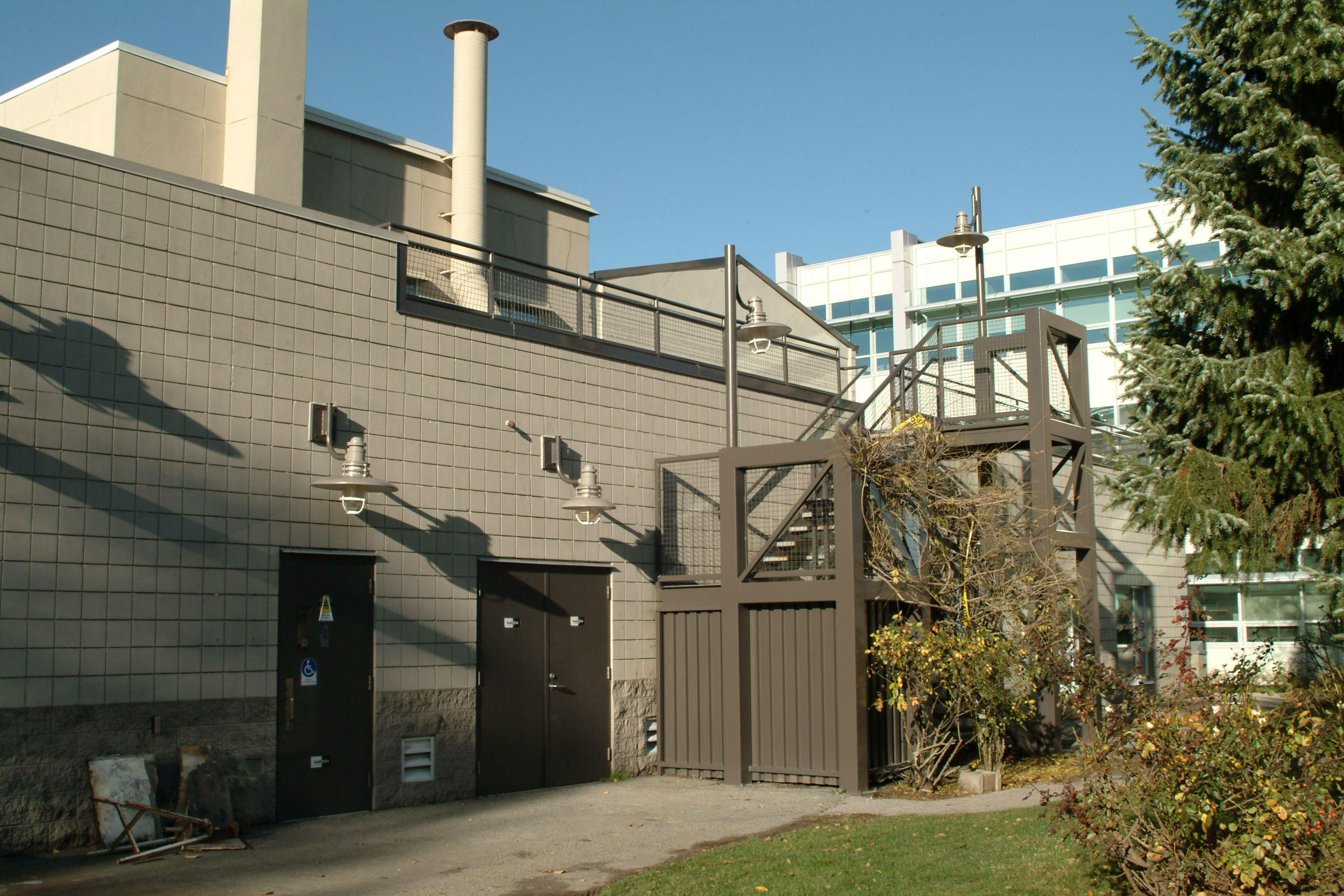
Building E is now Spruce. Spruce is connected to Fir and makes up the other half of the academic learning building. Spruce was selected as a name because of the tree's familiarity to many people and its most common use -- the Christmas tree. Spruce is also well known for its musical applications. Instruments such as cellos, guitars, mandolins and even Stradivarius violins are made from this wood due to its distinctive resonant qualities. (Kirk Darbyshire photo)
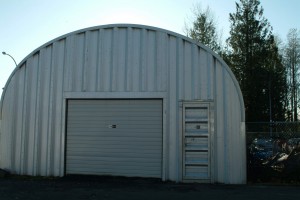
Building F is now Yew. Yew building may be a small storage building but no one would ever know that by the name chosen for it. Yew was a symbolic tree revered by the Egyptians, ancient Greeks and early Christians as the tree of everlasting life. (Kirk Darbyshire photo)
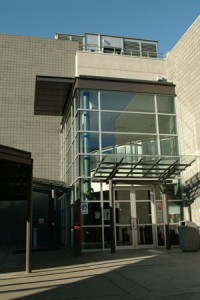
Building G is now Cedar. Cedar building is home to the gymnasium, KSA offices, and the Grass Roots Café. Cedar was selected as the name for one of Kwantlen's busiest buildings because of its historical importance to the First Nations People of the Pacific Northwest. Sometimes referred to as the long life giver, cedar had many uses across many cultures. (Kirk Darbyshire photo)
Students exchange culture and classrooms
November 26, 2009 by Kirk Darbyshire · Leave a Comment
If you have always wanted to study abroad but didn’t want to pay international student rates, then Kwantlen is for you this week.
On the heels of International Education Week, Kwantlen is hosting information sessions for students who wish to apply to spend a semester studying at selected schools around the world.
Journalism is one program that has been involved in student exchanges in the past.
“All the journalism students who have gone on our European exchanges have pretty much had life-changing experiences,†said Beverley Sinclair, journalism program coordinator at Kwantlen. “Apart from the journalism education they get abroad, they get the experience of living in a different culture, surrounded by the history and beauty of Europe.â€
Kwantlen is currently accepting applications for exchanges during the 2010/11 academic year. Students who wish to apply must meet certain requirements to be considered for the exchange program. Applicants must have a minimum 2.67 GPA and have completed at least 30 university credits, 15 of which must have been done at Kwantlen. As well, once finished the exchange students must then return to Kwantlen and complete a minimum of nine more credits in the following semester.
Along with academic requuirements, students are also responsible to cover their own costs of travel and living while on exchange. The one major advantage is that students will only have to pay tuition to Kwantlen, at the same rates they would pay if attending school in the Lower Mainland, and not the much higher international student fees traditionally charged visiting students.
Students are often encouraged to do the exchange during the spring term, because European school semesters do not match up with Canadian ones. If a student went abroad in the fall semester of 2010, their European exchange wouldn’t end until four weeks into Kwantlen’s spring term. Also, if students spend the spring semester studying, it frees them up to travel around Europe for the summer before they have to return to Kwantlen for classes in the fall.
Students who would like more information but who were unable to attend or missed the information sessions this week, can do so by contacting international programs and exchanges through e-mail at Internationalprograms@kwantlen.ca or by phone at 604-599-2255.
Students, staff can turn luck – and money – into Olympic tickets
November 18, 2009 by Kirk Darbyshire · Leave a Comment
Kwantlen students and staff can win the chance to purchase tickets to the 2010 Olympic Winter Games.
As a community contributor partner with VANOC, one of the opportunities available to the university is the chance to purchase tickets for a variety of events at the 2010 Games. Kwantlen has decided to pass that perk along to students and employees by way of a random draw. The draw is open to anyone who is an employee or is attending Kwantlen as a student during the 2009-’10 academic year.
“We (Kwantlen) have made 176 of 178 tickets available for the draw,†said Peter Chevrier, director of marketing for the university. The two tickets not being made available, which are for a preliminary men’s ice hockey game, were donated to a raffle to support the United Way campaign.
Anyone interested in winning the chance to buy tickets can make their request through the Kwantlen 2010 Olympic Games ticket request website, which is now online.
All tickets will be sold at face value and are available at a wide range of prices for a wide range of events. Events include everything from $1,100 opening ceremony tickets to $50 men’s freestyle skiing aerials qualifying event tickets. Tickets are even up for grabs for the men’s ice hockey gold medal game, if you can afford the $775-a-ticket price.
The final draw and notification of those who have been chosen for tickets will be done on Monday, Dec, 14. According to Chevrier, the luckier you are the more tickets you will have the chance of buying as there is no limit on the number of events one person’s entry can be selected for.
Once notified, people will have seven days to decide whether they want to buy the tickets. Tickets that are not purchased will be made available to others through a re-drawing.
Magazine’s $40,000 will endow journalism program
November 16, 2009 by Kirk Darbyshire · Leave a Comment
Some Kwantlen journalism students will be provided financial assistance in the form of a $40,000 endowment from a local magazine.
Mehfil Magazine, a popular Indo-Canadian lifestyle publication, has established the endowment because its publisher feels it’s important to support good journalism since it plays an important role.
Rana Vig, Mahfil’s co-publisher, hopes that by being the first Indo-Canadian publication in B.C. to establish an endowment of this size he’ll convince others will follow suit and support a high level of professional journalism in the community. Vig feels the university has been a leader when it comes to engaging the communities it serves, including the Indo-Canadian community.
The magazine, which was established in 1993, focuses on events in the Indo-Canadian community in the Lower Mainland. It’s also a source for features on people, lifestyles and fashion, as well as commentary on issues related to today’s Indo-Canadian
“We are very grateful for Mehfil’s support of our students,†said Robert Adamoski, Kwantlen’s social science dean.
The Kwantlen journalism program, which recently left the faculty of design and communications for its new home in the faculty of social sciences, has existed for more than 25 years. It offers students both four-year Bachelor of Journalism degrees and two-year diplomas.
Adamoski feels the Kwantlen program provides journalism students a strong understanding of the industry and prepares them for careers in multimedia journalism on graduation.
The endowment will provide annual funds for journalism students, according to journalism coordinator Beverley Sinclair. Sinclair feels this money could go a long way towards easing the financial burden university tuition and books puts on students.
“It amazes me how few students actually apply for scholarships,†said Sinclair, who recalls a previous student who almost completely paid for her tuition by applying for and receiving scholarships that are available every year to students.
Kwantlen on B.C.’s Top 55 Employers list again
October 26, 2009 by Kirk Darbyshire · Leave a Comment
Kwantlen Polytechnic University has again been chosen one of British Columbia’s top 55 employers for 2010.
“This is a testament to all those who worked hard not only for the students, but also on behalf of their colleagues,†wrote David Atkinson, president and vice-vhancellor of Kwantlen, in an online announcement.
The annual competition is in its sixth year, and is organized by the editors of Canada’s Top 100 Employers. This is the third time Kwantlen has been selected on the list.
The competition is open to employers of any size, as long as their head office or principle place of business is in BC. Employers in both the private and public sectors are eligible.
The competition looks at the same eight criteria used by its national counterpart:
- physical workplace
- work and social atmosphere
- health, financial and family benefits
- vacation and time off
- employee communications
- performance management
- training and skills development
- community involvement
Kwantlen, which is one of four universities on the 2010 list, was selected for its work in many areas. The university was recognized for new mothers maternity leave top-up benefits to 75 per cent of their salary for 52 weeks. Kwantlen also pays parental leave top-up benefits to 75 per cent for 37 weeks for new fathers or adoptive parents. Both exceed what employment insurance entitles workers to.
Another criteria that sets the university apart was vacation and time off. Kwantlen gives all new employees three weeks of paid vacation time during their first year on the job.
The university also helps employees balance work and personal lives through a variety of alternative work arrangements. Examples include telecommuting, which means employees enjoy flexibility in working location and work hours, and giving employees a 35-hour work week, with full pay and full company-paid health benefits.
Kwantlen prepared for new trans fat rules
October 4, 2009 by Kirk Darbyshire · Leave a Comment
British Columbia’s new trans fat regulations, the first of their kind in Canada, went into affect Sept. 30. The new restrictions promise to reduce people’s risk of exposure to industrially produced trans fat in situations where they have limited ability to know what’s in their food.
These new regulations may greatly change the way many eating establishments around the province do business, but not here at Kwantlen. “It’s been campus policy for a long time now,†said Belinda Kaplan, Director of Food Services for the Surrey campus. “We switched our products over well before the regulations came into affect.â€
Consumption of saturated or trans fat has been linked to numerous health issues including heart disease, diabetes and cancer. Trans fat is responsible for an estimated 3,000 heart disease-related deaths in Canada each year according to the Heart and Stroke Foundation of BC.
There are two kinds of trans fat, which occurs naturally in some meats like beef and lamb and in many dairy products. It’s also industrially produced, formed during hydrogenation, a process used to harden and stabilize liquid vegetable oils. It’s these industrially produced trans fats that the regulations announced by the Ministry of Healthy Living and Sport in B.C. are targeting.
For the past three years, food services on campus at Kwantlen have been ahead of the trans fat curve, using reduced fat margarine, trans fat free muffin mix and trans fat free oils in all of the deep fryers.
B.C.’s new restrictions require all soft spreadable margarine and oil to be two per cent trans fat or less of the total fat content.
All foods stored, prepared, served and sold at food service establishments, including restaurants, cafeterias, educational and health care institutions, schools and delis, will be under scrutiny.
The new regulations will be monitored and enforced by environmental health officers as part of their routine food safety inspections.
According to Kaplan, Kwantlen will have no trouble meeting or exceeding the new requirements since preparations were already made prior to the B.C. government’s announcement of changes.
Women’s basketball tips off Oct. 1
September 25, 2009 by Kirk Darbyshire · Leave a Comment
The Kwantlen women’s basketball program tips off its 2009-10 season Thursday, Oct 1, when they host the 10th annual Kwantlen Eagles Basketball Tournament.
All games in the three-day event will be played at the gymnasium on Kwantlen’s Surrey campus. This pre-season tournament is drawing teams from the Lower Mainland, Vancouver Island and Squamish who are all looking to prepare for the coming British Columbia Athletics Association (BCAA) season, which gets going in early-November.
“Expectations are quite high this year,†said Kwantlen Eagles coach Gary Pawluk. The second-year coach expects his team will be competitive, but will be in tough to unseat last years defending BCAA league champions from Victoria, the Camosun Chargers.
This years Eagles have eight players returning from last year’s squad, as well as one fifth-year pick-up. Their experience is the reason Pawluk is so optimistic about the season.
The Eagles tournament schedule will see them play three games in three days beginning Oct 1, with a game against the Douglas Royals. They will then play the Capilano Blues and Langara Falcons over the next two days.
“It’s all about preparing for season play,†said Pawluk. “We want to try to play all the teams in our league before it starts.â€
There will be no final game to determine a winner in this tournament. The format sees all teams play three games and a champion determined based on points for and against. The team with the biggest positive differential in this category will take home the trophy.
Tickets for the tournament will be of minimal cost, said Pawluk, who was unsure of exact ticket prices. There will be reduced ticket prices available for Kwantlen students and tickets will be available at the door.


